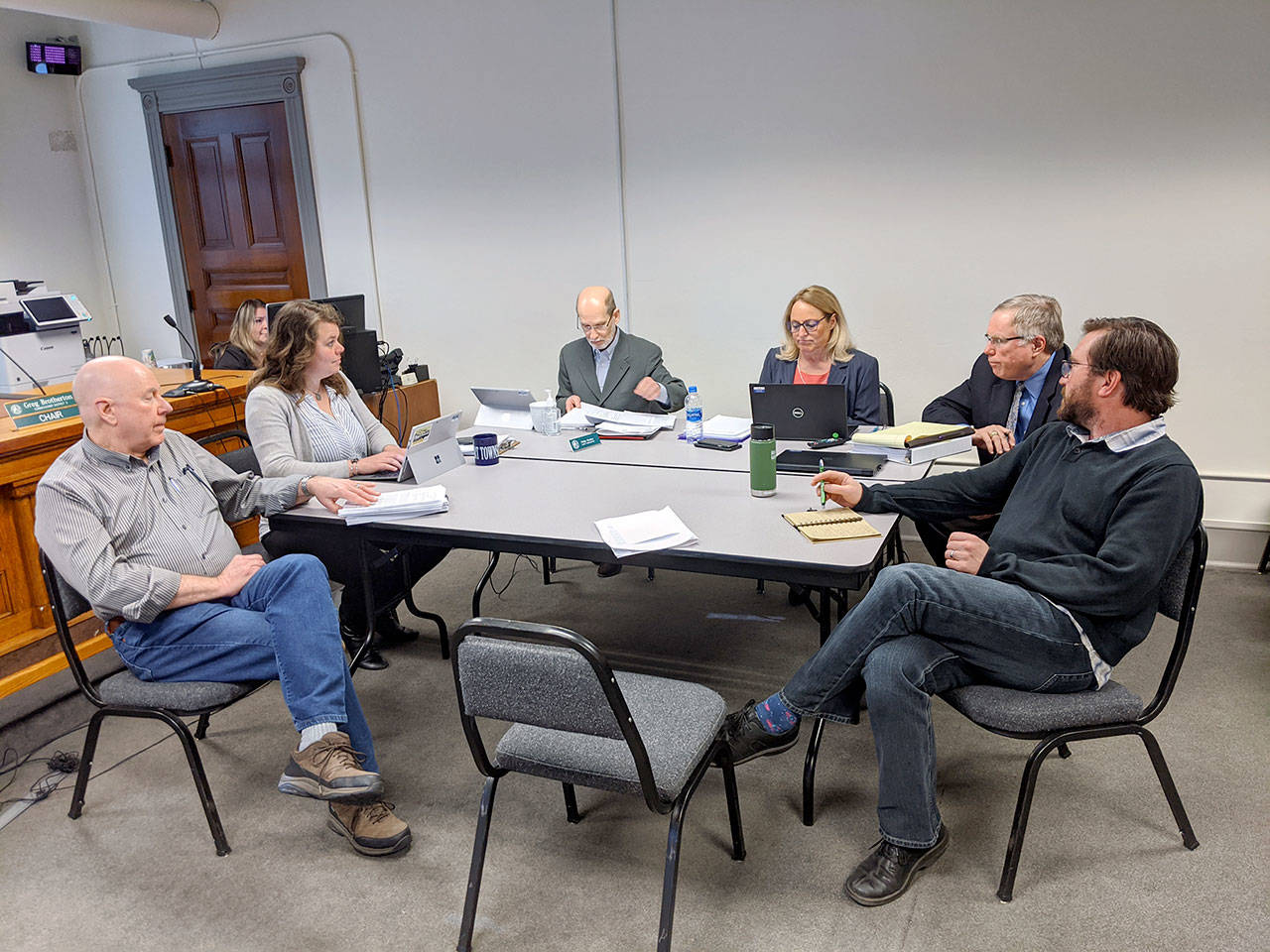PORT TOWNSEND — After two days of deliberations, Jefferson County commissioners unanimously approved the repeal and replacement of the Critical Areas Ordinance.
The decision was made after about three hours of deliberation and discussion by the commissioners; Patty Charnas, director of community development (DCD); County Administrator Philip Morley and Deputy Civil Prosecuting Attorney Philip Hunsucker on Monday and continued with a discussion lasting about 45 minutes Tuesday, when the ordinance was approved.
Some of the revisions that the commissioners asked Charnas and Hunsucker to adopt on Monday for Tuesday’s meeting was changing the word “farmer” to “producer,” adjusting definitions and other phrasing, while changes Tuesday were mainly focused on typos, word choice and formatting.
“We’ve talked a lot about all the changes, but I’m really impressed by how much is the same and how the protections are really still in place,” said Commissioner David Sullivan on Tuesday. “I feel really good about this.”
The Critical Areas Ordinance (CAO) is the primary regulation document for such at-risk ecological zones in the county as frequently flooded areas, critical aquifers and hills that pose geological hazards such as landslides.
The Growth Management Act requires all cities and counties to adopt development regulations that protect critical areas, said Charnas, citing the CAO handbook from the state Department of Commerce.
During the Monday session, the commissioners and staff evaluated some of the responses from the public, and then focused on revision suggestions from the state Department of Fish and Wildlife (DFW).
The revisions that the county adopted from the suggestions of DFW were primarily phrasing and procedural, such as the change from “farmer” to “producer,” Charnas said.
One of the concerns raised by the public at the public hearing conducted by the commissioners last Monday was about the requirement that a property owner who wants to improve a critical area has to talk with Charnas and the DCD about the improvements they want to make.
The CAO is written that way so that the DCD can make sure that the improvements will actually benefit the environment, verses possibly harming it, Charnas said.
“I understand it should just be allowed,” Charnas said Monday. “My experience is the best intentions could cause more harm than good.”
Improvements from the old ordinance to the current ordinance include updated purpose statements, clarifications to the general exemptions of the Administrative Provisions, consolidation of seawater-intrusion protection zones and added consultations with Environmental Public Health for critical aquifer recharge areas.
It also includes updated protection standards for frequently flooded areas, and definitions and standards regarding landslide, erosion and seismic hazards to geologically hazardous areas.
There are no substantive changes to protective standards for wetlands or fish and wildlife habitat conservation areas, and there is an added agricultural code that allows producers options between performance approaches or a prescriptive approach.
The full ordinance can be viewed at www.tinyurl.com/PDN-CriticalAreas.
The drafting of the critical areas ordinance started in 2014. County commissioners agreed two years ago to separate the planning for the comprehensive plan and the CAO, so the comprehensive plan could move forward in December 2018.
The commission created a Critical Areas Regulatory Reform Task Force last July as a way to further discuss the needed changes and recommend refinements to the policy that would be given to the planning commission, Charnas said.
The task force completed its recommendations and passed them along to the planning commission, which hosted a public hearing before it finalized the recommendations to the county’s Department for Community Development, which incorporated additional changes, Charnas said.
________
Jefferson County reporter Zach Jablonski can be reached at 360-385-2335, ext. 5, or at zjablonski@peninsuladailynews.com.

